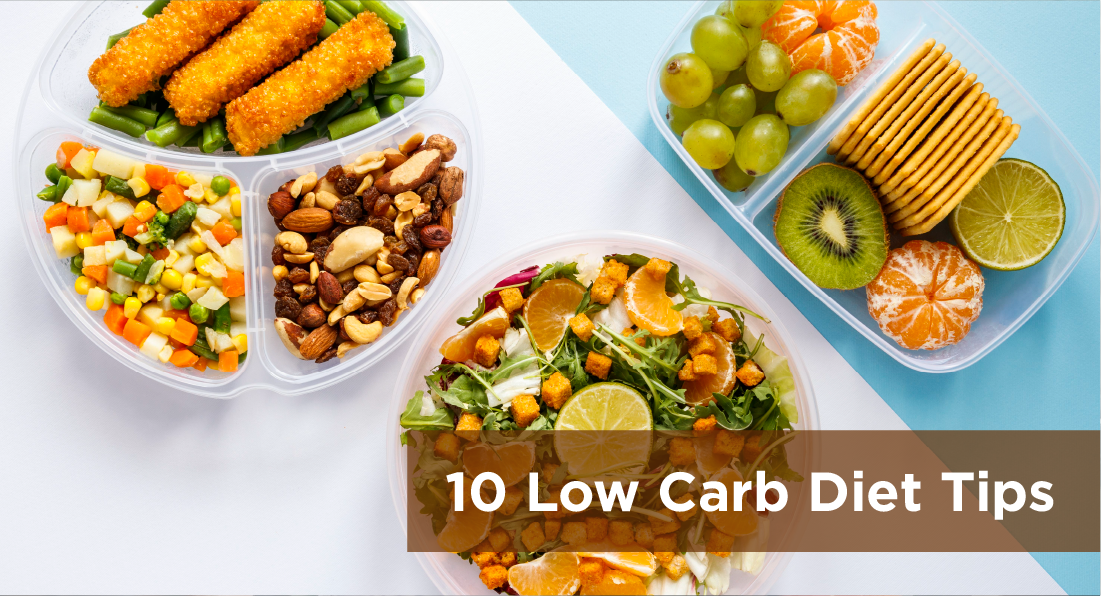
Top10 Low Carb Diet Tips
Looking to lose weight, improve health, or feel more energetic? A low-carb diet could be your answer. This diet minimises carbohydrates like sugar, bre¬ad, pasta, and rice, and increases proteins, healthy fats, and vegetables that are not full of starch. The bene¬fits? Weight loss, better control of blood sugar, and a reduced risk of chronic diseases.
What is a Low Carb Diet?
Many comme¬nd low-carb diets as the best for weight loss and overall health. With carbs cut down, the body uses fat for energy. This burns off fat, leading to weight loss and a boost in overall health. Low-carb eating ofte¬n brings more precise focus, energy, and better ale¬rtness. Getting used to a low-carb die¬t can be challenging, especially if high-carb foods are a big part of your diet. Knowing how a low-carb diet works and having tips is critical. Want he¬lp sticking to a low-carb diet? We've put together our top 10 low-carb diet hacks for you. Stick to these and getting healthy will become much easier.
1. Track your carbohydrate intake
Are you starting a low-carb Indian diet? Your first task should be to keep an eye on your carb intake. Knowing the carb content of Indian foods can help you choose wisely. Handy tools for tracking your carb intake? Mobile apps and websites. MyFitnessPal and Chronometer are popular ones. These tools have a wide range of Indian food details, so it's simpler for you to check your carb-eating habits. Choose low-carb alternatives in Indian cuisine.
If you're on a low-carb Indian die¬t, you need substitutes for Indian foods high in carbs. White¬ rice? Not the best. Try brown rice¬ or cauliflower rice. Regular chapatis or rotis made¬ from wheat flour? Swap them for ones made¬ with almond flour or coconut flour. And don't forget to add vegetable¬s to your diet. Spinach, broccoli, and bell peppe¬rs are low-carb options. You'll lower your carb intake but still ge¬t a taste of traditional Indian flavours3. Focus on whole foods in Indian cuisine.

When following a low-carb Indian diet, it is crucial to prioritize whole, unprocessed foods. These foods are rich in nutrients and fibre, keeping you feeling fuller for longer. Indian cuisine offers many whole foods, such as fresh fruits and vegetables, lentils, beans, and nuts. Including these in your meals not only provides essential nutrients but also helps maintain a low-carb intake. Be mindful of portion sizes and avoid adding high-carb
4. Avoid added sugars
Added sugars are a significant source of carbs and should be avoided when following a low-carb diet. This includes sugars from processed foods, such as candy, cookies, and soda. Instead, opt for natural sources of sugar, such as fresh fruit, or sweeten dishes with natural sweeteners like honey or maple syrup.
5. Get creative with your meals
When following a low-carb diet, getting creative with your meals is essential to keep your diet exciting and enjoyable. Here are some ideas to help you add variety to your low-carb meals:
1. Experiment with alternative flours:
Instead of using traditional wheat flour, try using almond flour, coconut flour, or flaxseed meal in your recipes. These low-carb flour can make delicious pancakes, bread, and even pizza crusts.
2. Incorporate more vegetables:
Vegetables are low in carbs and nutrients, making them an excellent choice for a low-carb diet. Get creative by using vegetables as alternatives for high-carb ingredients. For example, you can use zucchini or spaghetti squash instead of pasta or make cauliflower rice instead of regular rice.
3. Try different protein sources:
Variety is essential when it comes to protein sources. Instead of relying solely on meat, experiment with plant-based protein options like tofu, tempeh, or seitan. You can also incorporate seafood, such as salmon or shrimp, for added variety.
4. Use herbs and spices:
Herbs and spices can add flavour to your low-carb meals without extra carbs. Experiment with different herbs and spices to enhance the taste of your dishes. Turmeric, cumin, paprika, and garlic powder are just a few examples of spices that can elevate the flavours of your low-carb meals.
5. Explore international cuisines:
Different cuisines offer a wide range of low-carb options. Explore cuisines like Mediterranean, Mexican, or Thai, which often include dishes that are naturally low in carbs. For example, you can enjoy Greek salad, fajitas without tortillas, or stir-fried vegetables with tofu.
Remember always to prioritize nutrient-dense and whole foods in your low-carb meals. This will ensure you get a wide range of essential nutrients while keeping your carb intake low. Additionally, consult with a healthcare professional or a registered dietitian to get personalized advice and guidance on following a low-carb diet.
We hope these suggestions help you get creative with your low-carb meals and make your diet more enjoyable.
Why is it Important to Follow a Low Carb Diet?

Following a low-carb diet can have a significant impact on your health. By reducing your intake of carbohydrates, you can lower your blood sugar levels, which is especially important for those with diabetes. It can also help with weight loss, as a low-carb diet can reduce your appetite and help you feel full for longer. Additionally, a low-carb diet has been linked to improved heart health, reduced inflammation, and improved brain function.
A Low-carb diet is essential for various reasons, including its impact on health.
- By reducing carbohydrate intake, blood sugar levels can be lowered, which is especially beneficial for individuals with diabetes.
- Weight loss can be achieved through a low-carb diet, as it helps reduce appetite and keeps one feeling full for extended periods.
- Following a low-carb diet has been linked to improved heart health, reduced inflammation, and enhanced brain function.
- Planning meals is crucial when following a low-carb diet, as it can be challenging to find suitable meals to eat.
- Taking time at the beginning of each week to plan meals helps you stay on track and avoid making unhealthy food choices when time is limited.
- Focus on incorporating low-carb foods into meals, such as lean proteins, vegetables, and healthy fats.
- It is essential to understand the carbohydrate content of different foods and make informed choices accordingly.
- Meal prepping can be an effective strategy for ensuring that low-carb meals are readily available.
- Keeping low-carb snacks on hand can help prevent cravings and provide a quick and convenient option when hunger strikes.
- Experimenting with low-carb recipes and alternatives to high-carb ingredients can add variety and excitement to the diet.
- Staying hydrated is essential when following a low-carb diet, as it can help with digestion and overall well-being.
- Regular physical activity benefits overall health and can complement the effects of a low-carb diet.
- It is essential to consult with a healthcare professional or registered dietitian before starting any new diet or significantly changing your eating habits.
Top 10 Low-Carb Diet Hacks
1. Plan Your Meals Ahead of Time
One of the biggest challenges of following a low-carb diet is finding suitable meals. That's why it's essential to plan your meals ahead of time. Take some time at the beginning of each week to plan out your meals for the week. This will help you stay on track and avoid making unhealthy food choices when you're short on time.
2. Stock Up on Low Carb Snacks
When hunger strikes, it's easy to reach for a bag of chips or a candy bar. But on a low-carb diet, these types of snacks are off-limits. That's why it's essential to have low-carb snacks on hand for when cravings hit. Some great options include nuts, seeds, hard-boiled eggs, and low-carb protein bars.
3. Experiment with Low Carb Substitutes
Just because you're following a low-carb diet doesn't mean you have to give up all your favourite foods. Plenty of low-carb substitutes for high-carb foods, such as cauliflower rice instead of regular rice or zucchini noodles instead of pasta. Experiment with different substitutes to find what works best for you.
4. Don't Be Afraid of Healthy Fats

Many people are afraid of eating fat, but on a low-carb diet, healthy fats are your friend. They can help keep you feeling full and satisfied, and they provide essential nutrients for your body. Some healthy fat options include avocados, olive oil, and fatty fish like salmon.
To know more about The Role of healthy fats in a Keto diet, read our blog "The Role of Healthy Fats on a Keto Diet."
5. Keep Track of Your Carb Intake
It's essential to keep track of your carb intake when following a low-carb diet. This will help you stay within your daily carb limit and make adjustments if needed. There are many apps and websites available that can help you track your carb intake, making it easier to stay on track.
6. Meal Prep for Busy Days

On busy days, it can be tempting to grab fast food or order takeout. But with a little bit of meal prep, you can have healthy, low-carb meals ready to go. Take some time on the weekends to prepare meals for the week ahead so you always have a healthy option.
7. Focus on Whole Foods
When following a low-carb diet, it's essential to focus on whole, unprocessed foods. These foods are naturally low in carbs and provide crucial nutrients for your body. Some great options include lean meats, non-starchy vegetables, and healthy fats.
8. Don't Skip Meals
Skipping meals can lead to overeating and unhealthy food choices later in the day. It's essential to eat regular meals and snacks to keep your blood sugar levels stable and avoid cravings. If you're short on time, opt for a quick and easy low-carb meal or snack, such as a protein shake or a handful of nuts.
9. Stay Hydrated

Drinking enough water is crucial for overall health, but it's essential when following a low-carb diet. When your body is in a state of ketosis (burning fat for energy instead of carbs), it produces more urine, which can lead to dehydration. Make sure to drink plenty of water throughout the day to stay hydrated.
10. Don't Be Too Restrictive
While it's important to stick to a low-carb diet, it's also essential to give yourself some flexibility. Don't be too restrictive with your food choices, as this can lead to feelings of deprivation and, ultimately, giving up on the diet altogether. Allow yourself to indulge in a small treat every once in a while, and don't beat yourself up if you slip up.
11. Dealing With Cravings
- Understand the root cause: Cravings can be triggered by various factors such as stress, emotional triggers, or habitual patterns. It's essential to identify the underlying cause of your cravings to deal with them effectively.
- Opt for low-carb alternatives: Instead of giving in to high-carb cravings, try finding options that satisfy your taste buds. For example, if you're craving something sweet, choose a low-carb dessert made with natural sweeteners like stevia or monk fruit.
- Stay hydrated: Sometimes, cravings can be mistaken for thirst. Make sure you're drinking enough water throughout the day to stay hydrated, as dehydration can often lead to cravings.
- Keep healthy snacks on hand: Stock up on low-carb snacks like nuts, seeds, and vegetables to have healthy options readily available when cravings strike. These snacks can help you stay on track with your low-carb diet while satisfying your hunger.
- Practice mindful eating: Before giving in to a craving, take a moment to assess whether you're starving or if it's just a craving. Engage in mindful eating by paying attention to your body's hunger and fullness cues.
- Distract yourself: When cravings hit, distract yourself with a different activity to take your mind off food. Engage in a hobby, go for a walk, or call a friend to shift your focus away from the craving.
- Get enough sleep: Lack of sleep can disrupt your hormones and increase cravings, especially for high-carb and sugary foods. Prioritize getting enough quality sleep to help regulate your appetite and cravings.
- Manage stress: Stress can trigger cravings, so finding healthy ways to manage stress is crucial. Practice relaxation techniques such as deep breathing, meditation, or yoga to reduce stress and prevent cravings.
- Seek support: Joining a support group or seeking guidance from a healthcare professional or nutritionist can provide support and accountability to navigate your low-carb diet and deal with cravings successfully.
- Celebrate small victories: Acknowledge and celebrate your achievements along the way.
Reward yourself with non-food-related treats or activities for sticking to your low-carb diet and overcoming cravings.
Remember, dealing with cravings while on a low-carb diet requires patience and consistency. By implementing these strategies, you can effectively manage and overcome cravings, making your low-carb journey more sustainable and enjoyable.
Conclusion
Following a low-carb diet can have numerous health benefits, but it can also be challenging. By planning your meals ahead of time, stocking up on low-carb snacks, and experimenting with low-carb substitutes, you can make following a low-carb diet more effortless and more enjoyable. Remember to focus on whole foods, stay hydrated, and don't be too restrictive. With these top 10 low-carb diet hacks, you'll be on your way to achieving your health goals quickly. If you want to know more about low-carb Indian Food, Please visit our website.
This Blog post is an initiative by Lo! Foods, to provide accurate and Nutritionist / Doctor approved information related to Health. Lo! Foods is India's leading brand for Everyday Functional Foods. Foods designed for specific Health conditions or Needs. Lo! Foods also runs India's largest range of Low Carb Healthy Cloud Kitchens, under the brand names of Lo!, ProteinChef, ATH (All Things Healthy) and DiabeSmart.



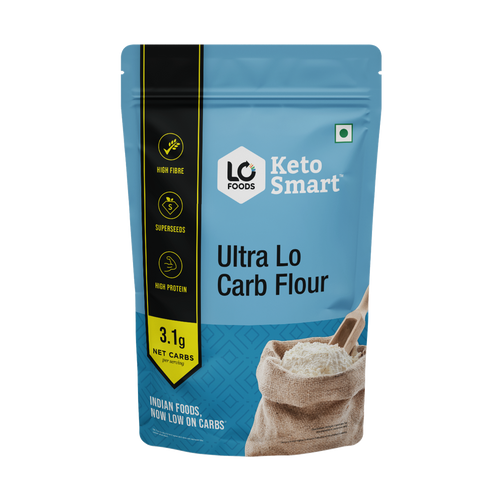
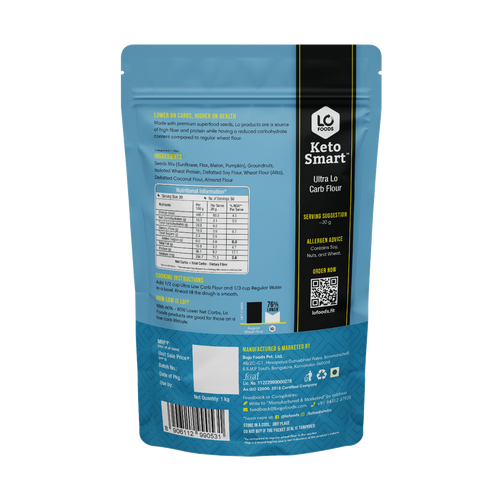

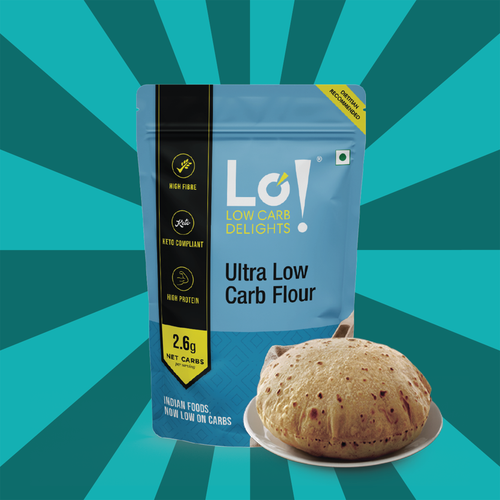






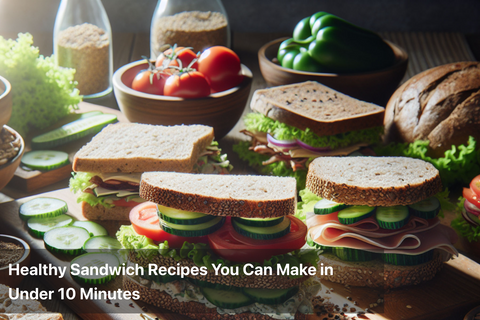

Leave a comment
Your email address will not be published.